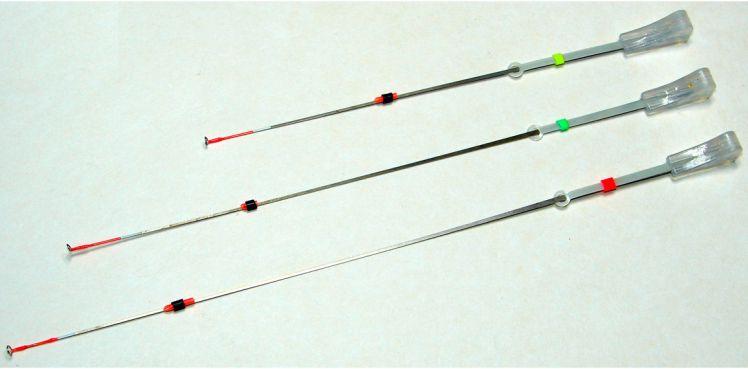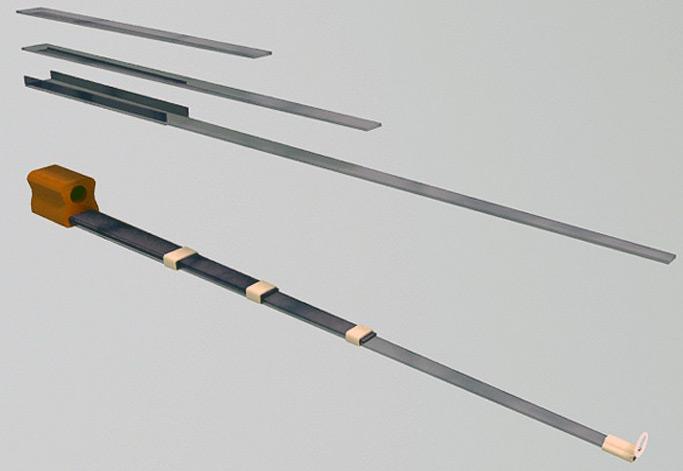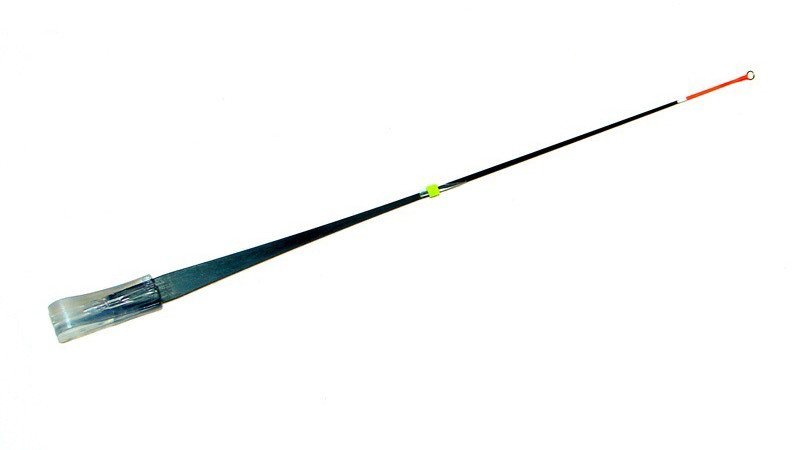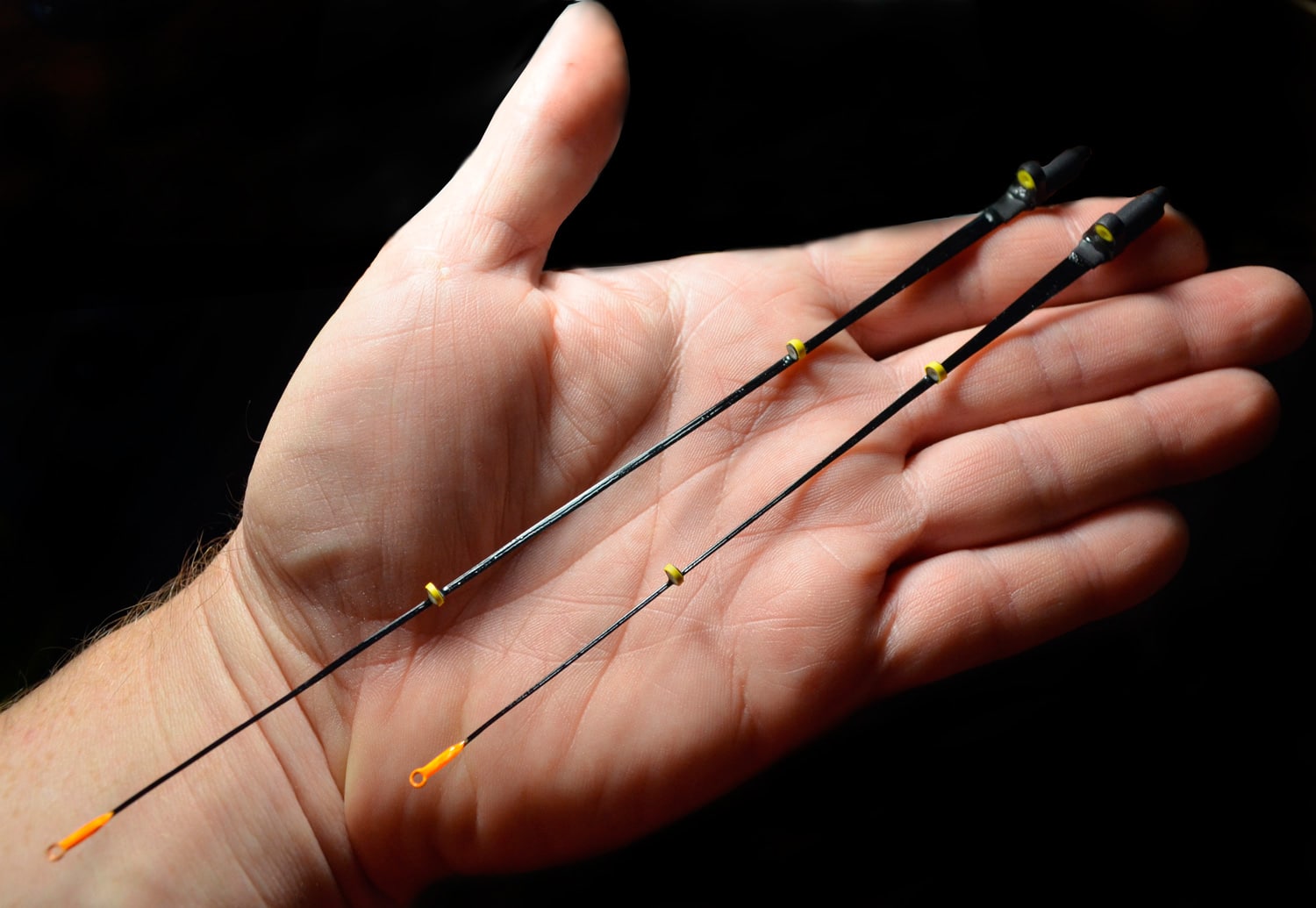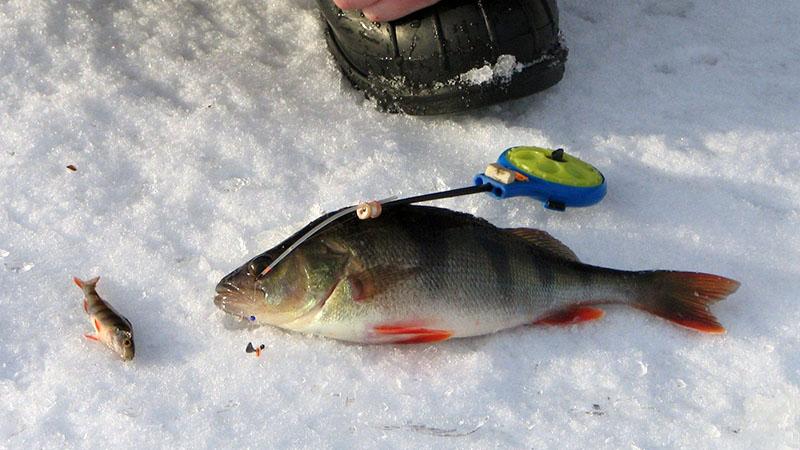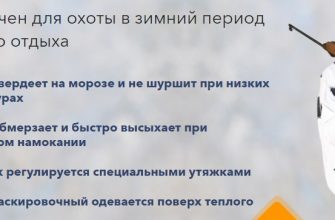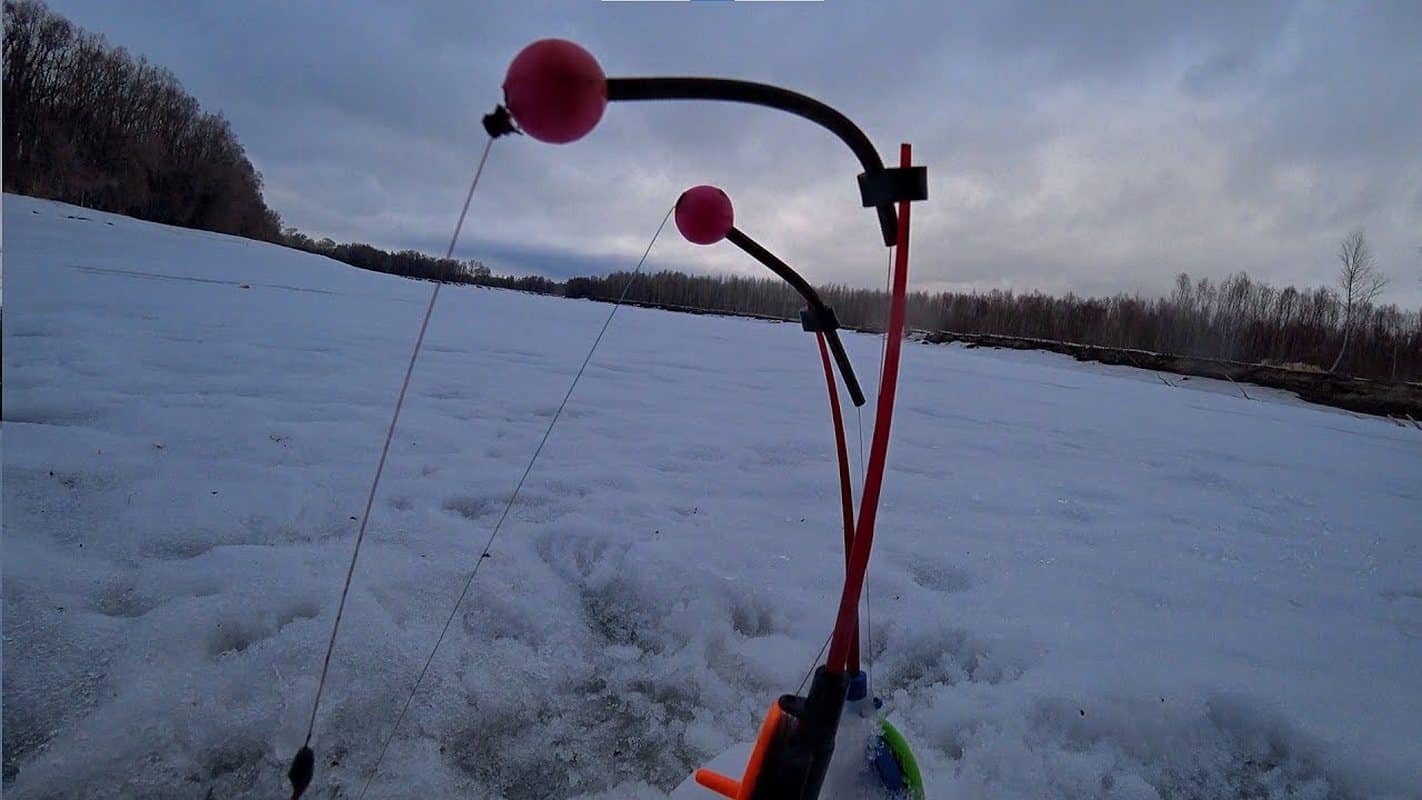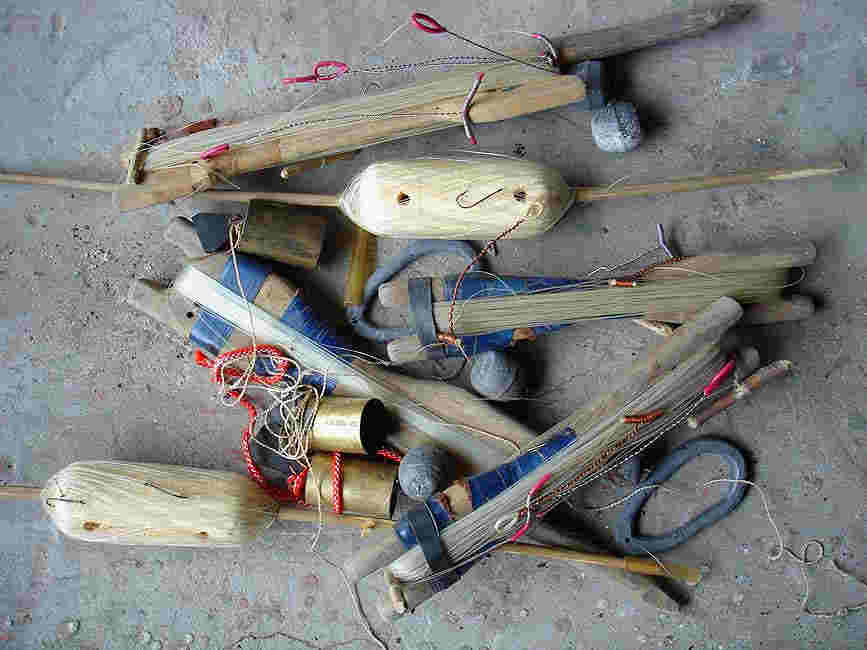A nod is a gate that is attached to the tip of the rod. Depending on the specific fishing option and fishing conditions, its length can be from 7 to 15 cm. The gates are made of elastic material. Various types of plastic, lavsan, astralon, carbon, or thin metal springs are often used to make a nod. The nods can be tapered, straight, bent up and down, of different rigidity.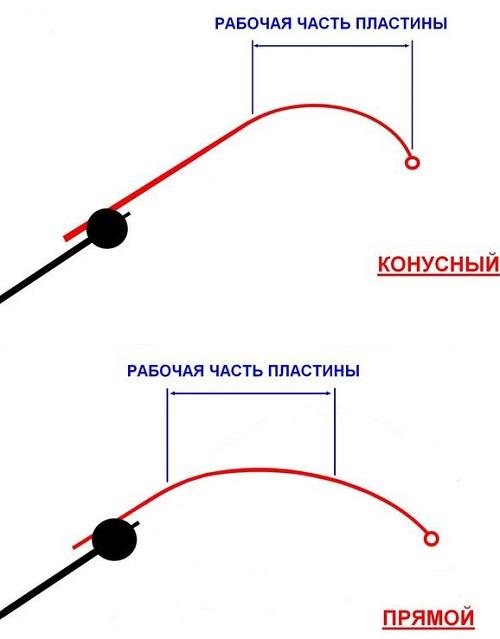
catching with a reel(no snag fishing with a jig) the correct selection and adjustment of the nod is of decisive importance. Its characteristics determine the peculiarities of playing with a jig, sensitivity when biting. If the nod is underused, then it reacts poorly to the movements of the fisherman, making the game ineffective, if overloaded, then it does not fully transmit the movements and with a delay. Correctly selected rig allows you to use various playing techniques, provides high sensitivity when biting. Of course, sometimes the fish can bite on a stationary tackle, but the bite will be more unpredictable and weak.
What to look for when choosing a nod for rewinder
In order to choose exactly the option of the gatehouse that you need, you need to know what characteristics you need to pay attention to. When choosing, usually take into account the following:
- The choice of rig depends on the intended fishing depth . Soft lodges are more suitable for shallow fishing with no nozzles. The greater the depth at the fishing point, the shorter and harder the nod should be. If you are fishing at a depth of 10 meters or more, the nod is usually not used. Fishing is carried out using a rod whip.
- You need to consider what kind of game is supposed to be . The nods should be different for different animation options. The sharper and more aggressive the animation is supposed to be, the harder the gatehouse is needed.
- It is necessary to take into account the shape . The nods can be straight or tapered in shape, the width of which decreases closer to the tip. The latter are considered more preferable. Each of them has certain characteristics when used. So, cone nods play out with the first quarter of the length, and even flat nods with the entire area. That is, conical nods, by analogy with the spinning terminology of fast action, and flat nods, of slow action.
- Nods are made from various materials . It can be: lavsan, metal spring, vinyl, nylon lavsan, polycarbonate, metallized lavsan, astralon. It is necessary to select the material when making a windless nod taking into account its elasticity, and the ability to restore its shape after bending.
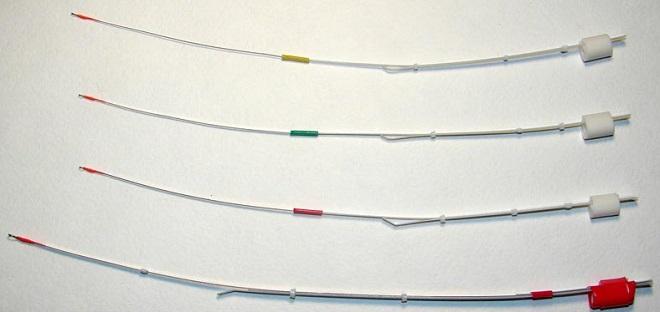
- The length is selected in order to provide the required frequency and amplitude of oscillations. Usually for fishing at shallow depths use 12-15 cm. As it rises, you need to use shorter options. For example, starting from a depth of 4-5 meters, bows with a length of 7-10 cm are used.
A correctly chosen nod should convey the movement of the rod to the jig well and provide high sensitivity when biting. The abundance of available options requires the fisherman to very carefully select the right model. The best nod for a rewinder is a spring, carbon or other option: https://youtu.be/mhDBsB2E25U
Specific types of nods for rewinder – there are plenty to choose from
The properties of nods are largely determined by the material from which they are made:
- The most commonly used lavsan products . They have good resilience and high durability. The disadvantage is vulnerability to wind blows. As a result, not only the game is distorted, but also a false bite signal can be issued.
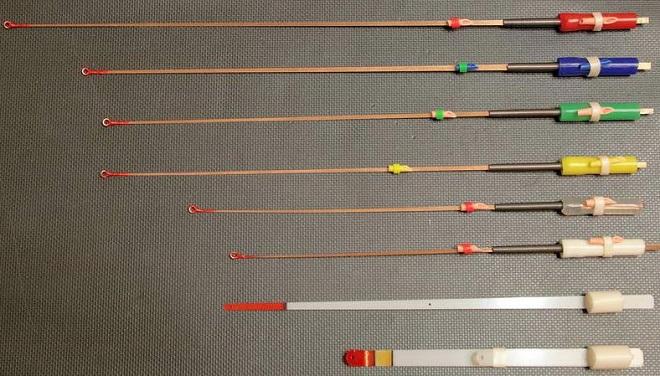
- The use of X-ray film to make the nods provides the required degree of elasticity. Products made from this material are usually used for fishing at a depth of two meters. A
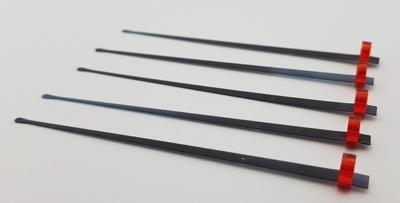
- The steel nod is used for catching bream, crucian carp and some other types of fish that do not tolerate sudden movements without a nozzle. It allows for a calm drive using smooth sweeping movements. Unlike carbon and lavsan products, the wind is not terrible for such nods. Usually such nods are used to equip fishing rods for animating heavier baits: “jellyfish”, ” devil ” or “goat”. The length of the nods in the form of metal strips is 16-25 cm.
- For many years, the use of nipple rubber for the manufacture of a gate has proved its effectiveness . It has suitable elasticity, is not affected by low temperatures, and is easily cleared of ice.
Other materials can be used to create a gatehouse: fishing line, boar bristles and others. These products can also differ in the shape of the bend:
- Straight is a rigid tackle. Shows a slow to medium action when flexed. Suitable for fishing at shallow depths.
- The fast action is suitable for fishing at shallow to medium depths. In this case, only the tip is bent, taking a downward direction.
- Made from a rigid metal plate, the nod can be slightly curved upwards . The weight of the jig makes the tip horizontal. Such a gatehouse averages the vibration amplitude of the jig.
- The overloaded nod hangs down and does not take part in the game. In this way, fish are fished at great depths. The movements of the jig are provided with a rod.
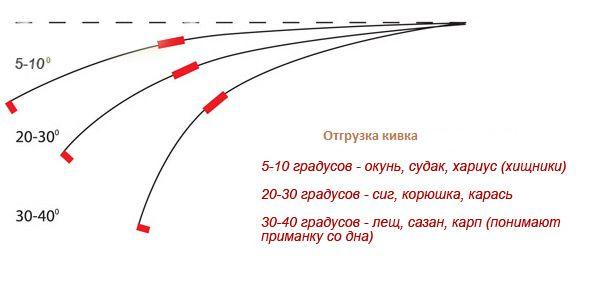
Testing the required option
When choosing, it is necessary to take into account the ability of the gatehouse to recover its shape after a break. If you stretch the strip between the nails, there should be no fracture marks on it. The nod must be symmetrical about its main axis. If it is made unevenly, then during fishing it will fill up, distorting the movement of the fisherman. You can test the nod by trying it over a bucket of water. It is attached to the rod, the line with the jig is lowered into the water and trying to play the right way. Although the depth will not be sufficient, you can still get an idea of its qualities. When buying, you need to pay attention to which test is indicated. He will tell you how much weight the used jig should have.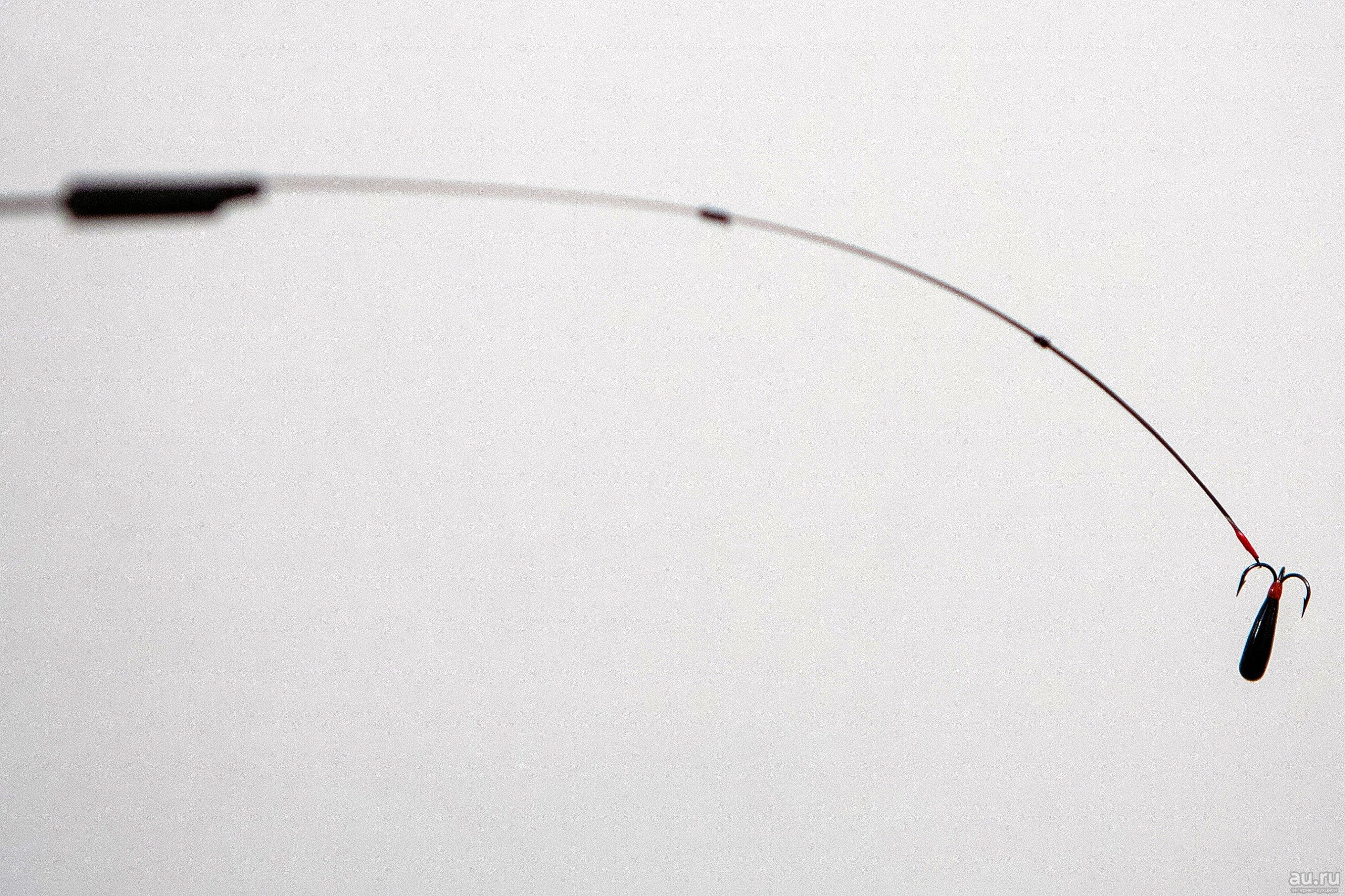
Homemade nods for hand made rewinder – video instructions
The most popular do-it-yourself do-it-yourself gatehouses are a homemade nod from an X-ray film, a carbon gatehouse, Ivan Vasilyev’s nod to Swallow’s Nest, a clock spring gatehouse, and others.
Popular nod for rewinding Ivan Vasiliev Swallow’s nest, its loading and setting step by step in practice: https://youtu.be/0NphouGCeyg Sometimes it is difficult to buy exactly the nod that is needed, in which case the tackle can be made or modified with your own hands. When making a nod and a plastic plate (for example, cut from a plastic spring), you need to do the following:
- A material with the required qualities is selected.
- Cut a strip of suitable length. It must be strictly symmetrical. Edges can be parallel or tapered. The latter option is considered to be more effective.
- Make two holes at the ends of the strip through which the fishing line will be threaded.
- A cambric is made, with the help of which the gate will be attached to the rod.
If a lighter jig is used than the one indicated for the test, then the nod must be made less rigid by undercutting both edges. It must be remembered that the workpiece must maintain its symmetry.